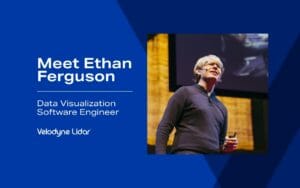
For a high school math project, I was tasked with writing a paper on a vector space rendering technique. After I received an A- on the report, I decided to post it on an online forum. Years later, I received a LinkedIn message about the paper from the head of visualization at Velodyne Lidar. A self-driving car heavy hitter wanted to give me the opportunity to implement those crazy visualization ideas I wrote about. Cheyenne Wolford, Visualization Technician Lead, read my paper, watched my TEDx talk, and thought I would be a great fit for his team. I originally accepted a consulting position at Velodyne as a teenager out of high school in 2019.
After working as a contractor for 2 years, in July I joined #TeamVelodyne as a Data Visualization Software Engineer (DVSE). I am a lifelong Memphian and highly involved in many areas outside of tech. I am an eminent 2022 graduate of Rhodes College in Computer Science as a Day Scholar. As a licensed Part 107 drone pilot, I have flown around the world above everything from thick rain forests to active volcanos.
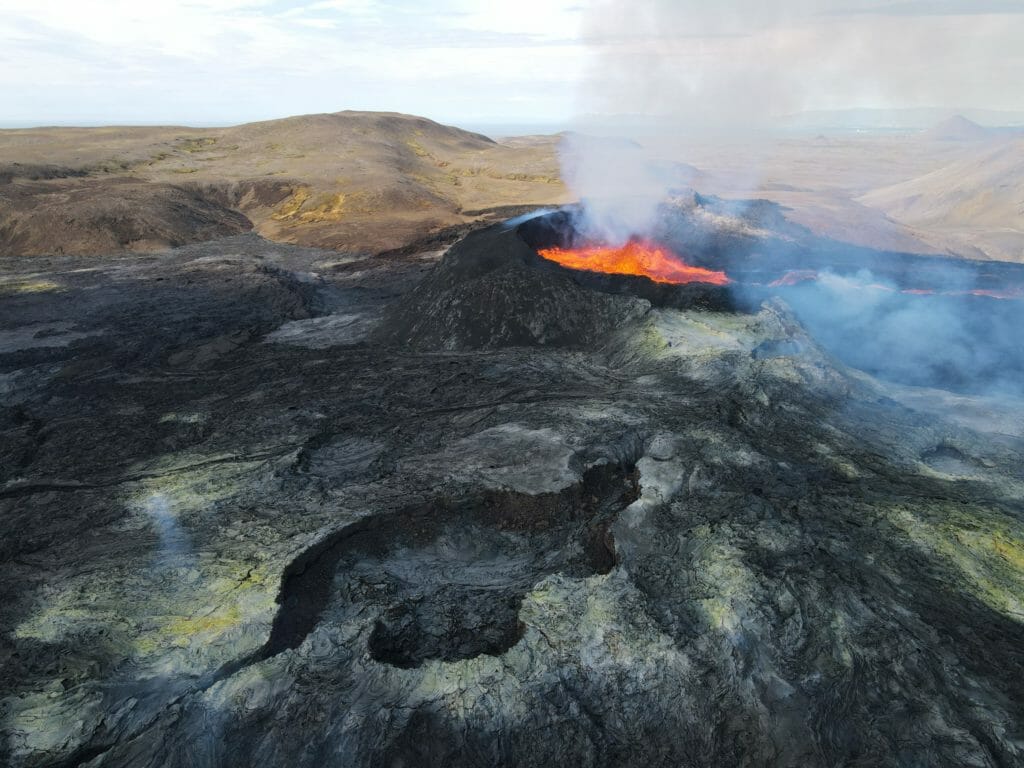
Volcano drone footage Ethan took as a licensed Part 107 drone pilot.
Growing up in my immigrant community has taught me to think globally. I worked with the former ambassador of Poland to coordinate an international delegation for the Memphis MLK 50 celebration. I was also part of another delegation attending a 2018 presidential inauguration in the Czech Republic.
I’ve had the opportunity to innovate in the education space as well. In 2014, I partnered with the Memphis Public Library System to help design a $2 million dollar teen community center. While working with Laurene Powell Job’s XQ foundation, I helped found an XQ charter high school in Memphis in 2016. I had the opportunity to help design the school layout in the revitalized Crosstown Concourse and serve on faculty to run its Virtual Reality Lab. In 2019, I gave a TEDx talk where I mused about my students’ work in everything from deep fakes and refugee empowerment to the applications of quantum mechanics in number theory.
Today, I regularly work with my high-school students to foster the next generation of software engineers. Teaching them how to use a Puck, for example, was an exciting Science Technology Engineering Art and Math (STEAM) opportunity that inspired them to dream bigger about their post-secondary journeys. When my students started getting their driver licenses, they created a virtual reality (VR) drunk driving simulation to educate their peers. In this experience participants drive through an obstacle course at varying blood alcohol contents to help them recognize the dangers firsthand.
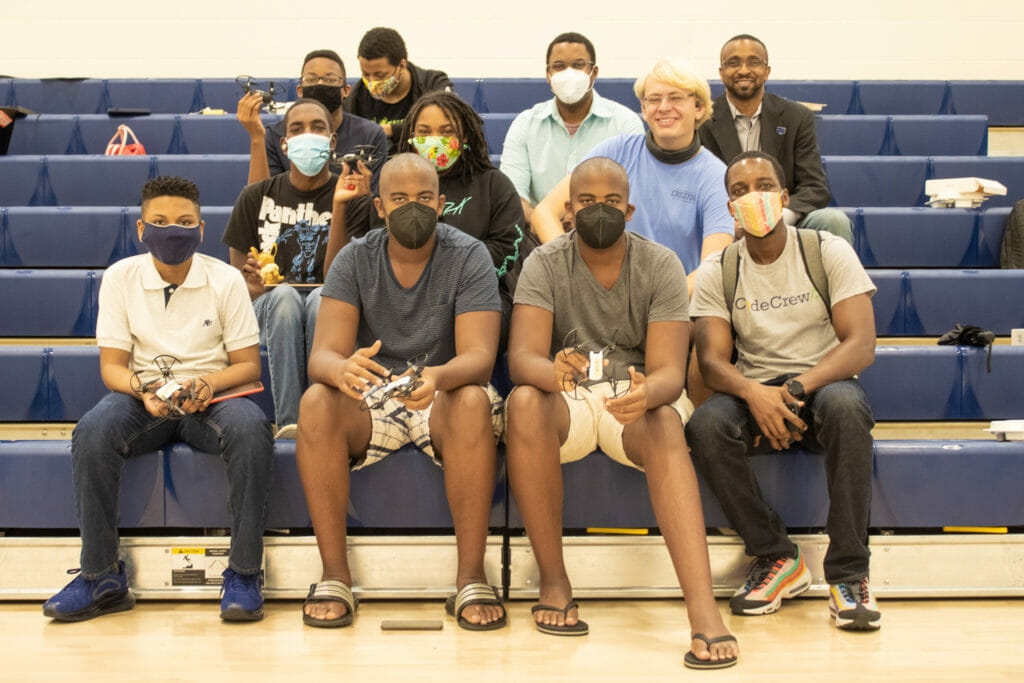
Fortunately, the pace of advanced driver assistance innovation means that my students’ peers may very well be in the last generation of drunk, drowsy, and distracted drivers. I empower my students for lucrative careers that don’t yet exist in the present. As an upcoming 2022 graduate myself, I view education outreach as one of the best ways for Velodyne Lidar to, as it says in our motto, “Envision the Future.”
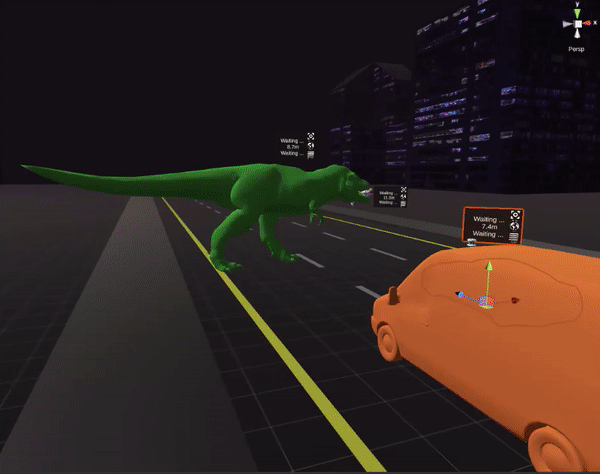
Do you want to see the outputs of cutting-lidar technology that cannot actually be seen by the naked eye? That’s where our Visualization, or Viz Team, comes in. I write software that not only accurately simulates existing sensors but prototypes new ones. As Velodyne Lidar expands its hardware repertoire, it is important to highlight the role that high fidelity simulations (sims) play in answering customers’ “What if ?” questions.
For example, in one of our proprietary tools, we can simulate a scene with multiple Velodyne lidar sensors in any hypothetical roadway situation. We use these sims to gain reliable insight into certain technical aspects of our sensors. We call this process “Imagining with Lidar”.
If you look up images of Velodyne Lidar point clouds in your browser, chances are you will see some visualizations from yet another one of our internal tools. Traditionally, lidar simulation has been hyper focused on engineering while art direction has taken a back seat. We, on the other hand, put accessibility first by centering visual simplicity without compromising on verisimilitude. For example, we have been able to achieve almost photorealistic point cloud playback using advanced shader technology.
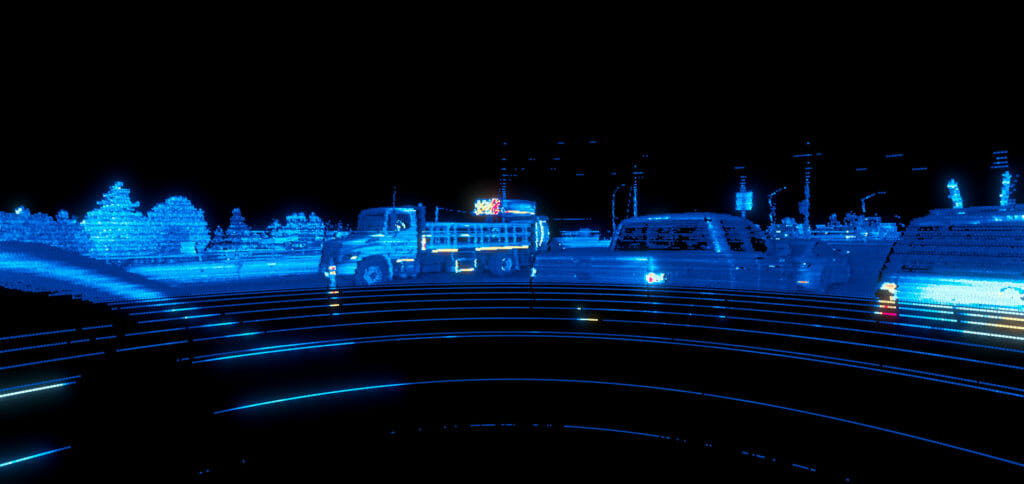
While it has been a joy to be the lead software engineer of our internal proprietary tools for visualizing Lidar, I couldn’t do it alone. The Viz team also consists of Peter Desrosier, Multimedia Content Developer, and, as mentioned, Cheyenne Wolford. Chances are you’ve seen their renderings plastered all over the Velodyne Lidar website and social media. We make an unstoppable force of nature because we each serve a vital yet interdependent role in the development of new visualization techniques. We operate on the analogy: I create paints/brushes, and my team fills the canvas with stunning lidar art. Our day-to-day routine consists of imagination sessions where we regularly push the envelope of what is visually possible to best serve our partners. Of course, there are a lot of bug fixes and some last-minute feature requests, but the nature of the team has allowed me the freedom to innovate in ways that would be impossible elsewhere.
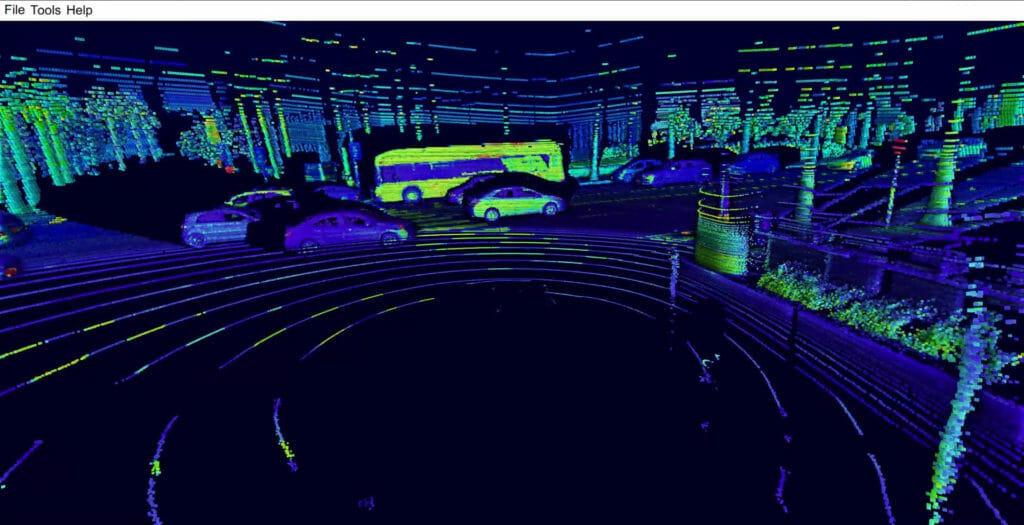
If you have ever seen some of our work in person, you will know that we are heavily involved in the extended reality (XR) space. Prior to the pandemic, all our public appearances have included some amazing VR demos. In that spirit, we are implementing software in the exciting new avenue of Volumetric XR. We have the ability to stream multiple live Velodyne lidar sensors in real time to form 3D 360º holograms. We look forward to showing this off at our next in person event. Moreover, we are taking our visualizations to the next level with a planned integration with Web 3.0 systems. This and much more is coming down the pipe. I am glad to be a part of the Velodyne Team. By helping people to truly see lidar for both what it is and what it can be, I am bringing a kind of light to the world (as trite as it may sound). My work both inside and outside of Velodyne serves the ultimate purpose of improving people’s lives in ways they never thought possible. Likewise, Velodyne Lidar is clearly the best in its class, yet still maintains the fighting spirit of an underdog. This unique position means we all have an important role to play. We need to help one another recognize the invisible points of light circling around each of us.
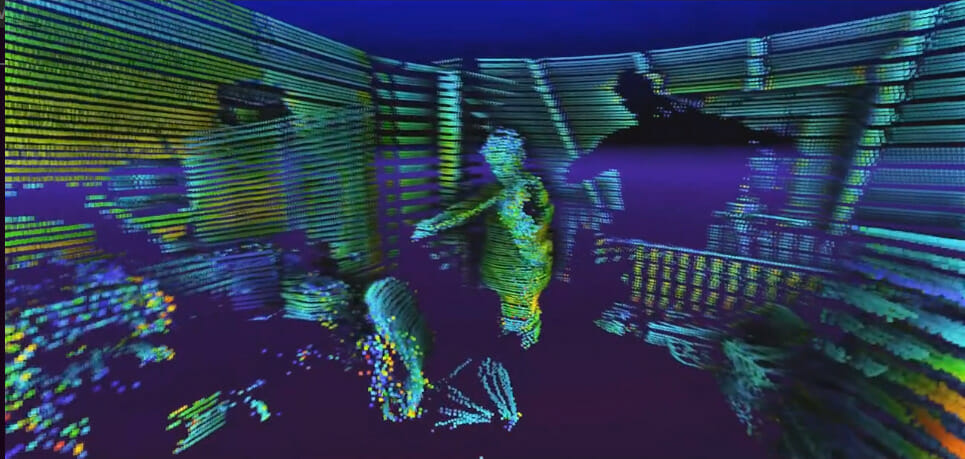
Defenseless into the night
Our world in stupor lies;
Yet, dotted everywhere,
Ironic points of light
Flash out wherever the Just
Exchange their messages:
May I, composed like them
Of Eros and of dust,
Beleaguered by the same
Negation and despair,
Show an affirming flame.
–W.H. Auden
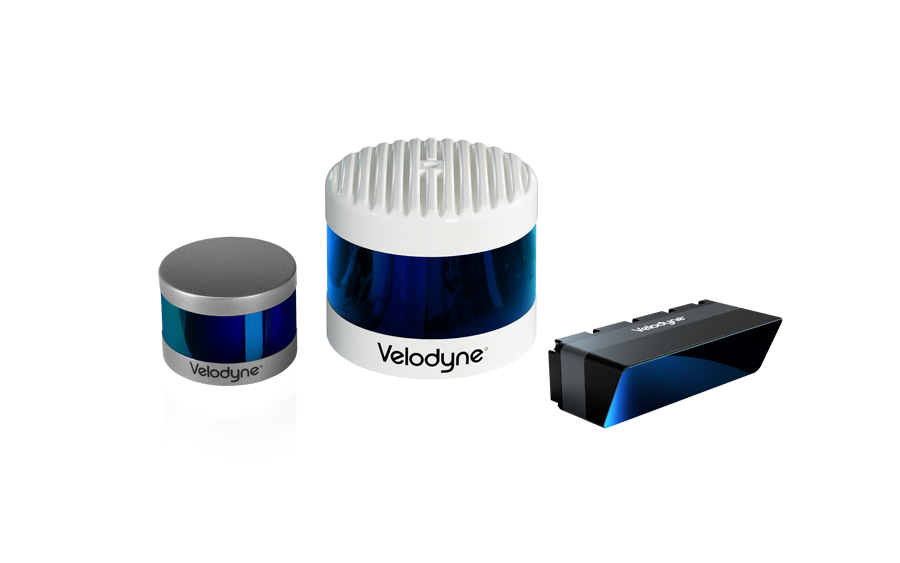
Velodyne Lidar (Nasdaq: VLDR, VLDRW) ushered in a new era of autonomous technology with the invention of real-time surround view lidar sensors. Velodyne, a global leader in lidar, is known for its broad portfolio of breakthrough lidar technologies. Velodyne’s revolutionary sensor and software solutions provide flexibility, quality and performance to meet the needs of a wide range of industries, including robotics, industrial, intelligent infrastructure, autonomous vehicles and advanced driver assistance systems (ADAS). Through continuous innovation, Velodyne strives to transform lives and communities by advancing safer mobility for all.